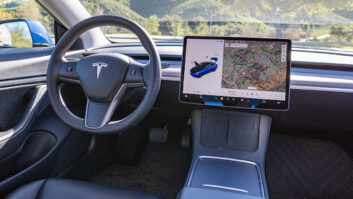A Future for Streaming
Nov 1, 2012 3:15 PM, By Chriss Scherer, editor
Streaming and Internet radio have faced challenges since their start, but despite the troubles, the services continue. Whether it’s an issue of bandwidth, royalties, listenership or just ROI, Internet radio continues and at least deals with if it doesn’t overcome the challenges.
The Arbitron report “Looking at the Infinite Dial 2012,” Internet radio listening has doubled every five years since 2001 and currently exceeds 76 million listeners. It’s steady growth, and it’s nipping at the heels of terrestrial radio.
The business side of streaming, particularly paying royalties, is probably the biggest hurdle broadcasters face. But there’s hope. Streaming rates have been renegotiated several times, improving little by little to the financial benefit of the streamers. With the Internet Radio Fairness Act of 2012 making its way through Congress, the recently formed Internet Radio Fairness Coalition is gearing up to improve the royalty rates across the board.
There’s a fair compromise. As a musician, I’m all for artists getting their fair share of any revenues seen from streaming. As a broadcaster, I also see the benefits of airtime exposure. The negotiations will hopefully find a mutually agreeable middle ground for both sides.
One factor in the growth of streaming is the proliferation of portable devices like smartphones. Having the Internet anywhere you go is certainly handy. While we’re a mobile society, that mobility is not locked to being on foot. We love to drive our cars. Several studies have noted that the next important step for Internet radio is to better integrate wireless connectivity into the automobile dashboard.
We know that’s coming. The classic two-knob and push-button car radio is becoming a thing of the past. Look at the radios — well, sound systems — OK, integrated electronics displays of the current cars. The radio isn’t really the center of the dash anymore, but it’s still part of driving the car. Internet radio is becoming a bigger part of daily life as listeners find their own niche programming choices. Making it more accessible in the car is the next logical step.
But I know what many are thinking: Streaming will never replace terrestrial radio, especially in times of crisis. I agree with that. We just saw Hurricane/Tropical Storm Sandy ravage the East Coast. Terrestrial radio is the communications lifeline in situations like this. Networks and carriers get overloaded or lose power. Radio stations in most cases are able to stay on the air and provide information.
But emergencies alone are not going to keep terrestrial radio in the foreground. Terrestrial radio will continue to have its place and purpose in listeners’ lives. But terrestrial stations can use the technology advances to maintain their businesses while still being available to serve the public interest.
Still remembering
The Society of Broadcast Engineers held its national meeting in Denver last month. The annual awards banquet, which honors the recipients of the SBE national awards program, is part of the national meeting events. At this year’s banquet I was asked to present a tribute to John Battison, who died on Aug. 28.
I was proud to pay tribute to my friend and colleague one more time by looking back at his life and recalling the history of his efforts in founding the SBE 50 years ago. That tribute was captured on video and we have posted it to the Radio magazine channel on YouTube.
November 2012
Step inside the radio studios at Universal Studios Orlando, ensure your data center’s reliability, apps for field contribution, selecting an FM antenna and Field Reports from JK Audio and AKG….












